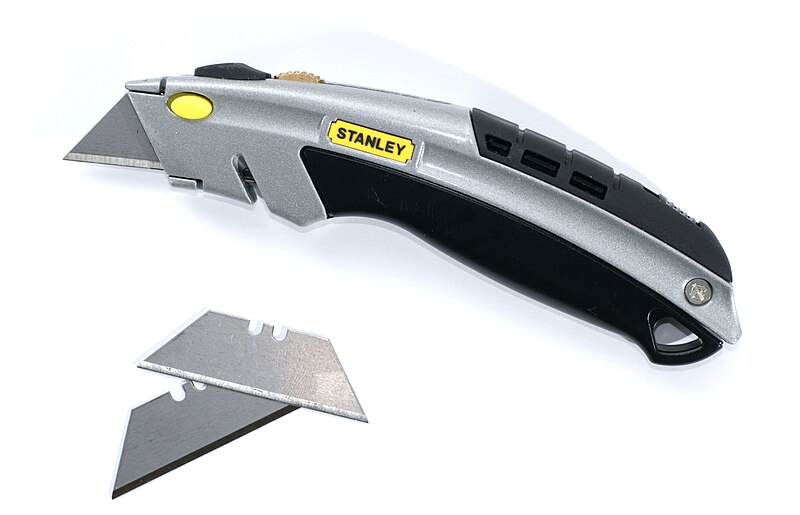How do you cut PCB?
I don't know if this is the best way, but I usually score it multiple times with a heavy-duty knife (on both sides) and snap it by hand. Obviously this won't work for any non-straight cuts. The knife I use is similar to one of these 
The first thing I should mention is safety. You need to wear breathing protection since the dust created by cutting is very hazardous to breath. Safety glasses should always be worn. As Norm would say -- read and understand all the manufacturers instructions for your tools.
I use either a hacksaw, bandsaw or tin-snips. Since I primarily use the bandsaw for wood I only use it if the blade needs to changed anyways. After cutting 10 linear inches of FR4 the blade will be useless for wood. I hate changing bandsaw blades.
Hacksaw is what I usually use. I leave 50mils between board edges. I place copper no closer than 25mils to the edge. The hacksaw blade is apx 35mils wide. I use a magnifying visor. This is fine for prototypes.
Sometimes I snip the edges with tin-snips. A scroll-saw would be ideal. Quick change carbide blades. Also I have heard of people using shears.
I finally settled on a wet tile saw. Turns out that it's not much different than the PCB saws that many places use to cut PCBs. A cheap wet tile saw from Harbor Freight costs about $70 (I got mine for $45 on sale), plus another $12 for the blade. The blade cuts a little over 1/16th of an inch, and with the saw guides I can cut very accurately. I also purchased a foot switch so I can cut PCB batches pretty quickly.
The advantage of a wet saw is that the dust is hardly a problem - it's trapped in the water, so while you still should wear protective equipment, you won't end up with fiberglass dust everywhere.
Further it's a very nice, ground cut. Very smooth - it's no different than the edges that were routed or sawn at the PCB fab house. I usually use a fine sandpaper to break the edges (which are a bit 'sharp') afterwards if I think people are going to be handling the PCB a lot.
The water poses no problem to the PCB itself, and if you already mounted components, most are washable. If you need to use it immediately a quick blast with the air hose or canned air removes all the water.